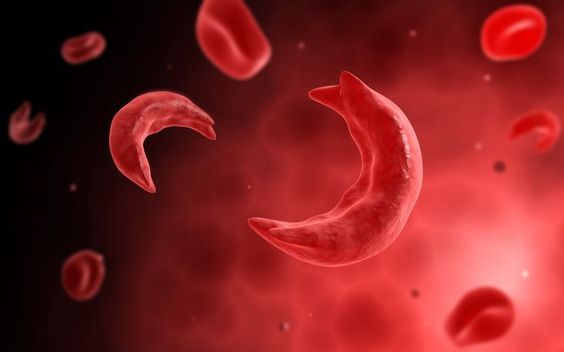Introduction:
Sickle cell disease is a group of inherited red blood cell disorders. Red blood cells are typically round and flexible, which allows them to move easily through blood vessels. In sickle cell disease, these cells become hard and sticky and resemble a C-shaped farm tool called a “sickle”. The sickle shape can cause the cells to get stuck in small blood vessels, which can slow or block blood flow and oxygen to parts of the body.

Sickle cell disease is a serious, lifelong condition. However, with proper treatment and care, many people with sickle cell disease can live full and productive lives.
This blog post will cover the basics of sickle cell disease, including its causes, symptoms, and treatment options.
What Causes Sickle Cell Disease?
Sickle cell disease is caused by a mutation in the gene that tells the body to make hemoglobin. Hemoglobin is a protein in red blood cells that carries oxygen to the body’s tissues and organs.
The sickle cell gene is passed down from parents to their children. If one parent has the sickle cell gene and the other parent does not, their child will have sickle cell trait. People with sickle cell trait usually do not have any symptoms of the disease, but they can pass the gene on to their children.
If both parents have the sickle cell gene, there is a 25% chance that their child will have sickle cell disease.
What are the Symptoms of Sickle Cell Disease?
The symptoms of sickle cell disease can vary from person to person and range from mild to severe. Some people with sickle cell disease have frequent and painful episodes called “pain crises”.
Common symptoms of sickle cell disease include:
- Fatigue
- Shortness of breath
- Pale skin
- Yellowing of the skin or eyes (jaundice)
- Delayed growth and puberty
- Painful swelling of the hands and feet
- Frequent infections
- Vision problems
How is Sickle Cell Disease Diagnosed?
A simple blood test, called hemoglobin electrophoresis, can determine if a person has sickle cell disease or sickle cell trait. This blood test is often included in the newborn screening panel done in the United States.
What are the Treatment Options for Sickle Cell Disease?
There is no cure for sickle cell disease, but there are treatments that can help manage the symptoms and prevent complications. Treatment options may include:
- Pain relievers: Over-the-counter or prescription pain relievers can help manage pain crises.
- Hydroxyurea: This medication can help reduce the frequency of pain crises and other complications.
- Blood transfusions: Blood transfusions can help increase the number of healthy red blood cells in the body.
- Bone marrow transplant: A bone marrow transplant is the only potential cure for sickle cell disease, but it is a risky procedure and not an option for everyone.
Living With Sickle Cell Disease
Living with sickle cell disease can be challenging, but there are ways to manage the condition and live a full and active life. It’s important to:
- Take medications as prescribed.
- Avoid triggers that can cause pain crises, such as dehydration, stress, and extreme temperatures.
- Stay up-to-date on vaccinations.
- See a hematologist (blood specialist) regularly for ongoing care.
- Join a support group for people with sickle cell disease.

.jpg)